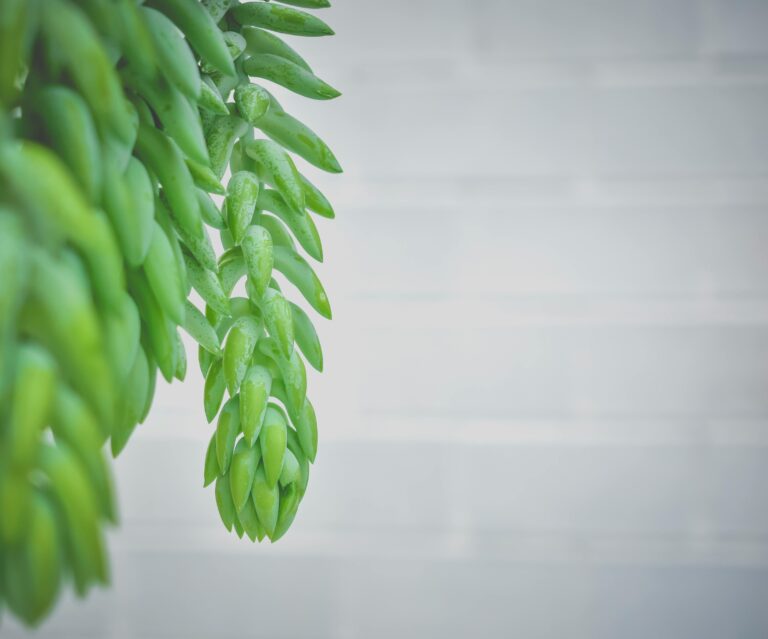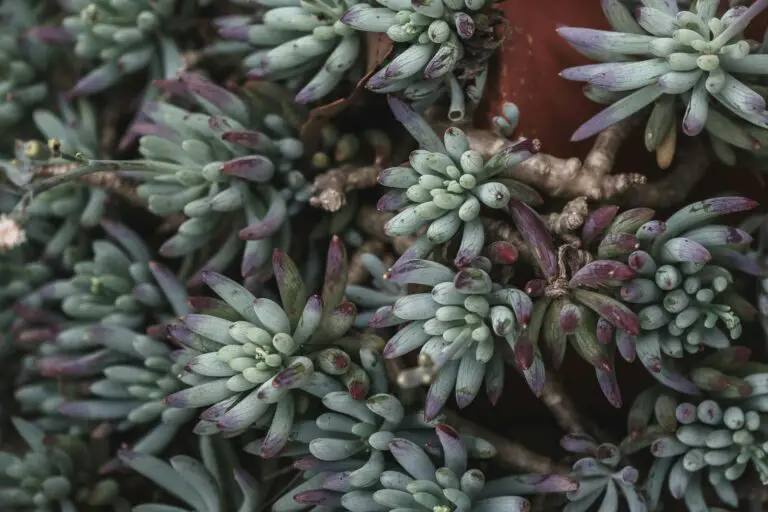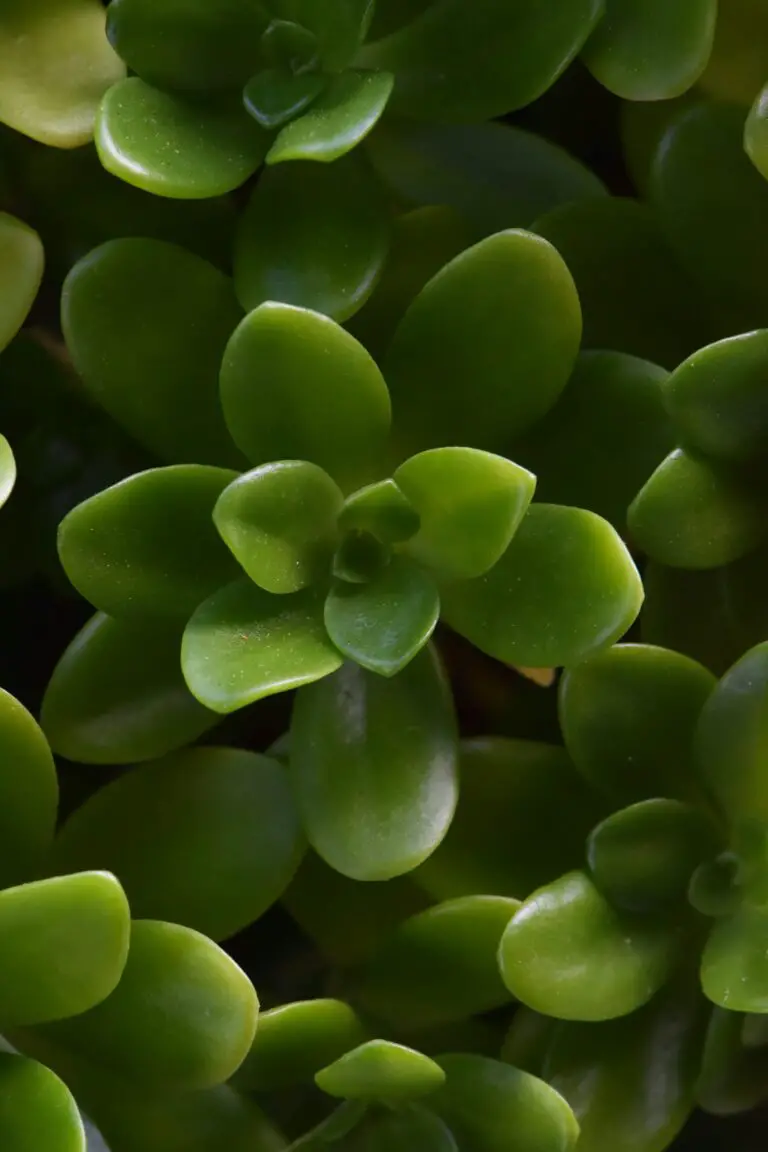“`html
Introduction to Sedum Reflexum
Welcome to the verdant world of Sedum reflexum, also embraced as Jenny’s stonecrop or the charming blue stonecrop. These succulents are not just a plant lover’s delight but a fascinating example of nature’s versatility. With their fleshy leaves and cascading habit, they evoke images of rugged alpine landscapes, yet they nuzzle just as comfortably in the cozy confines of a suburban garden.
What is it about Sedum reflexum that makes it stand out in the competitive world of ground covers? Imagine a sedum so resilient that it thrives in those sun-drenched spots where other plants might wither away. Its distinctive features – clusters of starry flowers and needle-like foliage in hues of blue and green – bring life to rockeries, green roofs, and even that neglected sunny corner of your backyard.
The popularity of Sedum reflexum in gardening and landscaping circles is well-earned. For novice gardeners and seasoned green thumbs alike, these durable succulents offer an accessible passageway into gardening success. They are perfect for anyone seeking to create a tapestry of year-round color with minimal fuss. And, let’s not forget, these hardy beauties provide an essential nectar source for pollinators, bringing your garden to buzzing life.
If you’re curious about how to care for these succulent treasures, a trip to BBC Gardeners World Magazine unveils a treasure trove of insights into Sedum reflexum care. And for those adventurous spirits who yearn to expand their succulent horizons, why not explore our in-depth guide on creating your very own sedum sanctuary? It’s a delightful journey through the habitats of these hardy succulents, with practical tips to ensure they flourish under your watchful eye.
Now, visualize this: a spectrum of sedum varieties dancing across your garden, offering a lush vista of vibrant greens and blues. It’s a sight to behold, and once experienced, it’s easy to see why Sedum reflexum has captured the hearts of gardeners worldwide. To bring this picture to life, why not gain some visual inspiration from this engaging video?
As we delve deeper into the wonders of Sedum reflexum, let it be said that the introduction is but the opening chapter. These resilient plants beckon us to learn more about their native roots and the roles they play in our gardens and beyond. Their story is as intricate as their foliage, and just as beautiful. So let’s continue our exploration, shall we?
“`
Native Landscapes: The Origins of Sedum Reflexum
Have you ever wondered about the birthplace of the robust Sedum reflexum? This hardy, evergreen succulent finds its roots nestled in the varied terrains of Europe. From the sun-kissed cliffs of the Mediterranean to the windswept outcrops of the British Isles, Sedum reflexum has etched its presence into diverse landscapes. But it’s not just about surviving; this plant thrives in the interstices of rocky outcroppings and alpine heights where its water-storing leaves bask in full sunlight.
Consider the idyllic coastal regions of Portugal or the rugged inclines of the Pyrenees. Here, Sedum reflexum isn’t just a plant; it’s an enduring character in the tapestry of these locales. Its succulent foliage, a vibrant tapestry of green turning to a blushing rose, reinforces the breathtaking scenery—a testament to its climatic adaptability. Moreover, these locales encapsulate the essence of the Mediterranean basin’s climate—a hotspot for the Sedum species.
Stroll through the German countryside, for instance, and you might spy Sedum reflexum peeking from between the ancient stones of a cottage wall, unwittingly telling the story of a bond with its native geography that has stood the test of time. It’s no surprise that gardening enthusiasts look to replicate this timeless beauty in their own backyard sanctuaries, seeking the resilient charm of this European native.
The versatility of Sedum reflexum is nothing short of remarkable. It’s acclimated itself not just to sheer mountain cliffs or arid seascapes but to the subtle variations in between. Whether it’s basking in the arid climate of Spain or nestling in the temperate embrace of France, it paints a picture of ecological harmony. Its very existence is a nod to a broader discussion on environmental adaptations and survival strategies of plant species.
But let’s not forget the gardeners and botanists, whose experienced hands and nurturing spirits have enabled Sedum reflexum to journey from its native nooks to our gardens and urban landscapes. Their dedication to plant migration and cultivation is a narrative deeply intertwined with the story of Sedum reflexum.

Ecological Significance of Sedum Reflexum
Dive into the wild greenery, and you might stumble upon the vibrant Sedum reflexum, a plant that’s much more than just a pretty face. This succulent, also known as Jenny’s stonecrop, isn’t just surviving in its native haunts—it’s thriving with a gusto that’s commendable. But its home isn’t just anywhere; it hails from rocky outcrops and alpine meadows across Europe and Western Asia. A true native that weathers the extremes.
Now, consider this: in its natural habitat, Sedum reflexum isn’t just sitting pretty basking in the sun. It’s part of an intricate ecosystem, where it engages in a fascinating tango with its environment. These succulents are like mini eco-warriors, equipped with thick fleshy leaves that store water, outsmarting drought, and laughing in the face of sparse soils.
But what about the local wildlife, you ask? Sedum reflexum is like a beacon of nourishment for a variety of pollinators buzzing from petal to petal. Its star-shaped flowers don’t just hypnotize us with their beauty—they’re a gourmet banquet for bees and butterflies. Its presence alone is a statement of life in places where few can endure.

One cannot ignore the delicate equilibrium between Sedum reflexum and its neighboring flora and fauna. For instance, just around the corner from the clusters of Sedum reflexum, you might spot the intricacies involved in cultivating these versatile succulents. These are the partnerships and rivalries that make its ecosystem buzz with an energy unique to its own.
So, if after reading this, your green fingers are tingling with the urge to sprinkle a bit of Sedum reflexum magic into your own patch of earth, remember, its ecological significance goes much deeper than its rugged good looks. It reminds us that even in the harshest environments, life finds a way to not just survive, but to connect, adapt and flourish.
Cultivation and Care for Sedum Reflexum
Envision your garden peppered with the vibrant, fleshy leaves of Sedum reflexum, also known as “Jenny’s Stonecrop.” What a delightful botanic excursion, right at home! This hardy succulent winks at passersby, begging for a spot in every plant aficionado’s green refuge. But hold up—before you whirl into gardening frenzy, let’s demystify the art of keeping this jewel perky and prosperous!

First off, soil matters. Imagine Sedum reflexum as the Goldilocks of the plant world—it longs for the “just right” conditions. That means well-draining soil is a must. Too soggy? Roots might throw a tantrum. Too dry? Leaves could shrivel in silent protest. A mix that’s one part grit to two parts fairy-tale soil (a loamy concoction, if you will) could be your ticket to cultivating these spirited sprouts.
Now let’s talk sun salutations. Sunlight is to Sedum reflexum as applause is to a performer—utterly essential. Full sun basking works wonders, but a smidge of shade won’t spoil the show. Our green performer is versatile, adept in the sun-splashed limelight or the dappled understage. No matter the setting, be sure it gets its daily dose of glorious photons.
General care for these succulent celebrities isn’t rocket science. In fact, consider Sedum reflexum the low-maintenance friend in your plant circle. Regular watering? Only when the soil whispers dryness. Overhead downpours? Skip the drama; a gentle shower at the root level is the ideal scene. And when winter unfurls its chilly white carpet? Ease up on the hydration—Sedum reflexum likes its winter rest undisturbed and on the drier side.
Remember, Sedum reflexum hails from a lineage that doesn’t shy away from roughing it in rocky, rugged realms. It’s their “born to be wild” badge of honor. So treat them to conditions that echo their brave ancestral landscapes, and they’ll reward you with a horticultural showstopper that commands an encore season after season.
Sedum Reflexum in Garden Design
Beauty and sustainability don’t always go hand in hand, but when it comes to Sedum reflexum, also known as stone orpine or Jenny’s stonecrop, they dovetail perfectly. This tenacious succulent not only adds a touch of architectural elegance to your outdoor space but does so with minimal fuss and maximum resilience. Let’s dive into how this versatile plant can become the backbone of your garden aesthetics, transforming it into a delightful tapestry of textures and colors.
The artistry behind Sedum reflexum lies in its capacity to create striking contrasts. Picture it creeping gracefully along rocky eddies in a vibrant rock garden. Its fleshy, needle-like leaves provide a year-round blue-green hue that contrasts splendidly against rough stone, creating a natural yet sophisticated tableau. They’re risk-takers, thriving in crevices where other plants might shy away, showcasing how vibrant life can flourish even in the roughest of environments.
When it comes to garden borders, Sedum reflexum truly shines. Its dense foliage forms a lush, low-growing mat that extends like a living mosaic at your feet. This resilient succulent performs a disappearing act each winter, receding gracefully, only to emerge with renewed vigor come spring. This seasonal dynamism offers a decorative edge that keeps onlookers eagerly anticipating its return.

But why stop at ground level? Let’s elevate our perspective to the burgeoning trend of green roofs. Here, Sedum reflexum is not just a plant but an ecological statement. Cladding our rooftops in these succulents isn’t merely about aesthetics; it’s about creating habitats, insulating buildings, and slicing through the urban heat island effect with every square foot. Imagine the visual delight of seeing greenery draped across the skyline—an urban meadow dancing in the breeze.
Wondering how to start integrating this gem into your own garden? One way to begin is by acquainting yourself with some practical planting tips to ensure your stonecrop thrives. Whether nestled in a quaint alpine trough or sprawling across a sunny slope, Sedum reflexum will not only enchant you with its looks but also with its tenacity, asking for so little yet giving so much. Revamp your garden’s design vocabulary with the rugged elegance of Sedum reflexum, and watch as it grows into an emblem of enduring beauty and resilience.
Conservation Concerns for Native Stonecrops
As we delve into the natural world of Sedum reflexum, also known as stonecrops, it’s impossible to overlook the pressing issues threatening their existence. Climate change and habitat loss are the twin juggernauts wreaking havoc on these resilient yet vulnerable species. To comprehend their plight, let’s first visualize the rocky outcrops and alpine nooks—these plants’ sanctuaries—that are now at risk of disappearing.
In their native European landscapes, stonecrops have flourished, carpeting the terrain with their fleshy leaves and starry blooms. However, increasing temperatures and erratic weather patterns are altering these terrains. Picture an old mountain cottage framed by green stonecrop roofs, a sight that may soon fade into memory if the perils of climate change continue unchecked.
Acting Against the Climate Clock
As temperatures surge, stonecrops face a perilous race against time. Their ability to withstand drought and poor soil is legendary, but extreme heat and prolonged dry spells push even hardy species like Sedum reflexum to their limits. Conservationists are now in a bind, trying to preserve the microhabitats that have sustained these plants for eons.
Next to climate change, habitat destruction from human activities paints a grim picture. Urban sprawl, agriculture, and land development chip away the stonecrop’s natural havens. Through vivid real-life examples, we witness the former glory of lush stonecrop sites now turned barren—an irreplaceable loss not just for biodiversity but for the ecological services these plants provide.
Preserving Green Heritage
Encouragingly, there’s a silver lining amid these conservation concerns. Green-roof initiatives are rising to the occasion, making cities breathe easier as they mimic the stonecrop’s indigenous habitats. These ecological oases offer not only a glimpse into conservation efforts but also demonstrate the practical role of Sedum reflexum in urban sustainability.
Indeed, conserving stonecrops isn’t merely an environmental task—it’s a testament to our dedication to safeguarding the green tapestries of our home planet. Efforts to protect them are sprouting up, from community-led conservation projects to large-scale habitat restoration endeavors, all united by the purpose of keeping these species thriving for generations to come.
In facing these conservation challenges head-on, we are reminded of the fragility and fortitude of life—in the resilient leaves of Sedum reflexum and its kin, and in our own resolve to preserve the natural world for the future. So the next time you stroll by a sedum-adorned rooftop or a wild stonecrop cluster, take a moment to appreciate these stoic survivors and consider what actions you can take to be part of their continued story of resilience and survival.
Frequently Asked Questions
Got a green thumb or itching to dig into the world of succulents? Look no further than the fascinating Sedum reflexum! An evergreen carpet of delight, this resilient plant heralds from the rocky landscapes of Europe, but let’s dive into the nitty-gritty details you’re yearning to know.
Which rocky crags call Sedum reflexum their home?
Nature’s mosaic, Sedum reflexum, is famously native to the rocky outcrops of Europe. Imagine it basking in the golden sun of the Mediterranean or toughing it out on the windswept highlands of Northern Europe. Its hardy nature means it’s designed to thrive where other plants dare not root, adding vibrant green hues to the earthy tones of its native habitats.
Isn’t this plant just a pretty face? How do I keep it thriving?
While it’s true that Sedum reflexum adds a touch of rugged beauty to any space, maintaining its charm is a piece of cake. This succulent friend is as low-maintenance as they come. All it asks for is a sunny spot and well-draining soil. Water it sparingly—think of it as the camel of the plant world—and it’ll reward you with its plump, cheerful leaves.
Let’s talk expansion: How do I propagate Sedum reflexum?
Propagation is like the magic trick of the plant kingdom, and Sedum reflexum is no exception. Snip off a stem, let it callous over for a day or two to think about its future, then pop it into soil that drains faster than a sink without a stopper. Voila! In a little while, you’ll have a new plantlet ready to conquer the world (or at least the pot).
Eco-warrior in disguise: What are the ecological perks of Sedum reflexum?
Don’t be fooled by its carefree demeanor; Sedum reflexum is an ecological powerhouse. Its dense matting makes it a stellar candidate for green roofing, essentially a superhero cape for buildings looking to reduce their carbon footprint. Plus, this green gem provides a buffet for pollinators, supporting local ecosystems with every flutter of a bee’s wings.
And there you have it—Sedum reflexum is not just another green face in the crowd; it’s a low-upkeep, easily propagated, eco-friendly superstar. Whether it’s jazzing up your garden borders or bringing life to a stone wall, this versatile succulent is a true testament to the beauty and resilience of nature.


